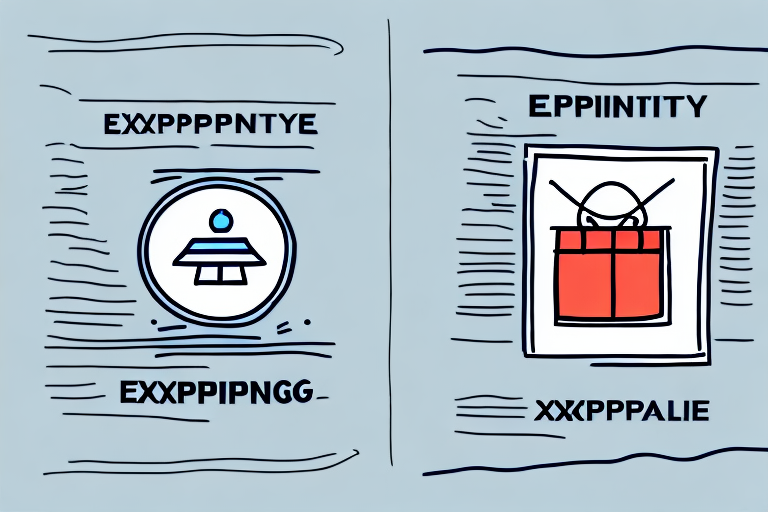Comparing Expedited and Priority Shipping: What's the Difference?
Shipping is a critical component for many businesses, and selecting the appropriate shipping method can significantly impact your operations and customer satisfaction. While expedited and priority shipping are often used interchangeably, they possess distinct characteristics that cater to different business needs. This article delves into the nuances of expedited and priority shipping, compares the two methods, and assists you in determining which option best aligns with your business requirements.
Understanding Expedited Shipping
What is Expedited Shipping?
Expedited shipping is a service that ensures faster delivery times compared to standard shipping options. Depending on the carrier, expedited shipping typically delivers packages within 1 to 3 business days, making it ideal for time-sensitive shipments.
It's important to distinguish expedited shipping from overnight shipping. While overnight shipping guarantees next-day delivery, expedited shipping offers rapid delivery but may take a few days. Additionally, expedited shipping generally incurs higher costs, influenced by factors such as carrier rates, package size, and destination.
One major advantage of expedited shipping is the availability of real-time tracking information, allowing businesses to monitor their shipments closely. This feature is particularly beneficial for companies managing multiple deliveries simultaneously.
Eligibility and Restrictions
Not all items qualify for expedited shipping. Carriers may impose restrictions on certain products, including hazardous materials or oversized items. It's essential to verify your shipment's eligibility with your chosen carrier before opting for expedited shipping.
For more details on shipping eligibility, refer to the FedEx International Services.
Understanding Priority Shipping
What is Priority Shipping?
Priority shipping is another expedited service aimed at delivering packages faster than standard shipping. Unlike expedited shipping, priority shipping is predominantly offered by the United States Postal Service (USPS). USPS Priority Mail typically delivers within 1 to 3 business days, making it a favored choice for small businesses shipping within the United States.
Benefits of Priority Shipping
- Cost-effective flat-rate options
- Reliable delivery timelines
- Ideal for small to medium-sized businesses
Considerations for Priority Shipping
While priority shipping provides quicker delivery than standard options, it doesn't guarantee delivery within the specified timeframe. External factors such as weather conditions and high package volumes can lead to delays. Additionally, priority shipping does not include insurance or tracking by default, so adding these features is advisable if necessary.
For more information, visit the USPS Priority Mail page.
Comparing Expedited and Priority Shipping
Delivery Time
- Expedited Shipping: Typically 1 to 3 business days.
- Priority Shipping: Generally 1 to 3 business days within the US.
While both shipping methods offer similar delivery windows, expedited shipping is available through multiple carriers internationally, whereas priority shipping is primarily a domestic service via USPS.
Cost Considerations
Expedited shipping usually commands a higher price point compared to priority shipping. However, costs vary based on package dimensions, weight, destination, and the chosen carrier. Businesses must evaluate the necessity of faster delivery against budget constraints.
The USPS pricing guide provides detailed insights into cost structures for priority and expedited shipping options.
Service Features
- Tracking: Expedited shipping often includes comprehensive tracking, whereas priority shipping may require an additional fee for tracking services.
- Insurance: Generally not included in priority shipping but available as an add-on for expedited services.
- Delivery Guarantees: Some carriers offer guaranteed delivery times with expedited shipping, providing additional assurance.
Choosing the Right Shipping Method for Your Business
Assessing Your Business Needs
- Delivery Time: Determine if next-day delivery is essential or if a 1-3 day window is acceptable.
- Budget: Balance the cost against the urgency of the shipment to choose the most economical option.
- Destination: Utilize expedited shipping for international deliveries and priority shipping for domestic needs.
- Package Specifications: Ensure your package meets the size and weight restrictions of the chosen shipping method.
Type of Product
Fragile or perishable items may necessitate specialized packaging and handling, influencing both cost and delivery time. Additionally, some carriers restrict shipping certain product types, such as hazardous materials or oversized items.
Cost Analysis of Expedited vs Priority Shipping
The cost disparity between expedited and priority shipping is influenced by factors like carrier rates, package size, weight, and destination. Generally, expedited shipping is more expensive but offers faster delivery. Priority shipping, especially with USPS flat-rate options, can be more budget-friendly for businesses.
Evaluating the value and urgency of your shipments is crucial. High-value or time-sensitive items might justify the higher cost of expedited shipping, whereas standard priority shipping may be sufficient for less urgent deliveries.
For a detailed comparison, visit the FedEx International Services and USPS Priority Mail page.
Best Practices for Expedited and Priority Shipping
Proper Packaging
Ensuring packages are correctly packaged is vital for both expedited and priority shipping. Improper packaging can lead to damage or delays. Adhere to carrier guidelines for packaging and labeling to guarantee safe and timely delivery.
Use protective materials such as bubble wrap for fragile items and sturdy boxes to withstand transit conditions.
Tracking Shipments
Tracking is an indispensable feature for managing expedited and priority shipments. Most carriers offer tracking services that allow you to monitor the status and estimated delivery time of your packages.
Utilize tracking to stay informed about potential delays or issues, enhancing your ability to communicate effectively with customers.
Handling International Shipments
International shipments add layers of complexity, including additional documentation and customs clearance. While expedited shipping can expedite delivery, customs processes can still affect overall delivery times. Ensure all necessary documentation is complete to minimize delays.
Refer to the US Customs and Border Protection guidelines for comprehensive information on international shipping requirements.
Avoiding Common Mistakes
- Selecting an inappropriate shipping method for your package's needs.
- Failing to package items securely, leading to damage or delays.
- Providing inaccurate shipping information, resulting in lost or misrouted packages.
- Overlooking customs clearance time for international shipments.
Dealing with Shipping Issues
Even with careful planning, shipping issues can occur. If a package is delayed or damaged during expedited or priority shipping, promptly contact the carrier to report the issue. Many carriers offer solutions such as refunds or resending the package at no additional cost.
Maintaining open communication with carriers and customers can help resolve issues efficiently and preserve business relationships.
Maximizing Savings with Expedited and Priority Shipping
To reduce costs associated with expedited shipping, consider partnering with a shipping platform that offers discounted rates or collaborates directly with carriers. Additionally, utilizing flat-rate boxes or consolidating shipments can lead to significant savings.
Implementing these strategies can help manage your shipping budget while maintaining fast and reliable delivery standards.
Balancing Speed, Cost, and Reliability
Selecting between expedited and priority shipping requires balancing speed, cost, and reliability. Expedited shipping provides faster delivery but at a higher cost, suitable for urgent or high-value shipments. Priority shipping offers a more economical option with reliable delivery times, fitting regular business needs.
Evaluate your specific business requirements to find the optimal balance, ensuring excellent service without compromising your budget.
Expert Insights on Expedited and Priority Shipping
To gain a deeper understanding of expedited and priority shipping, we consulted with a logistics professional who shared their expertise on the advantages and drawbacks of each method:
"Expedited shipping is ideal for businesses that require quick delivery to meet customer expectations," said our expert. "However, the higher costs can be a limiting factor for some."
"On the other hand, priority shipping through USPS provides a reliable and cost-effective solution for domestic shipments," they added. "It helps small businesses maintain competitive delivery times without incurring excessive expenses."
Ultimately, the choice between expedited and priority shipping hinges on your business's specific needs, including package size, destination, and delivery urgency.






















